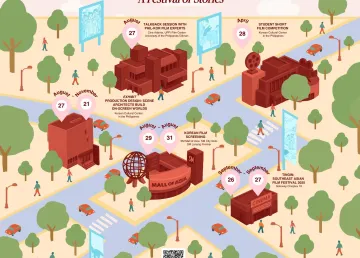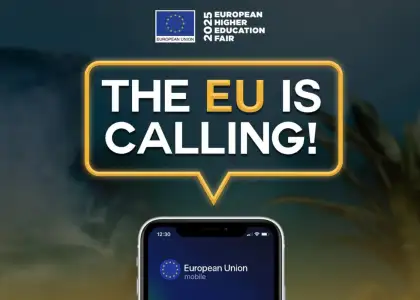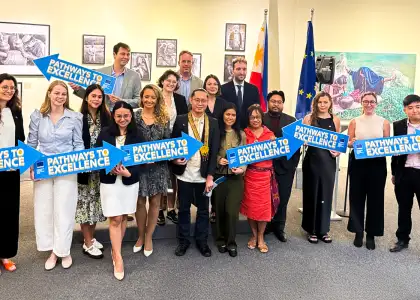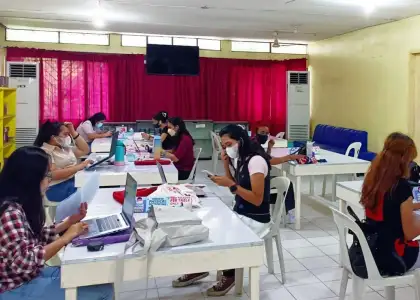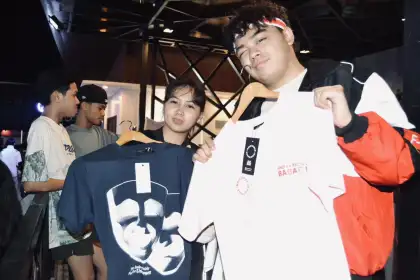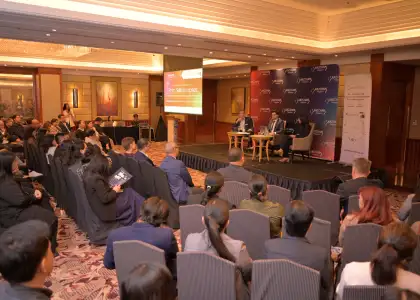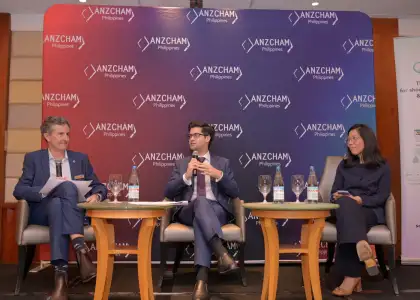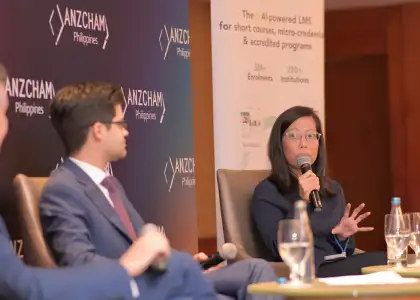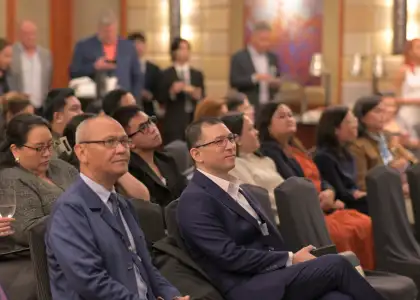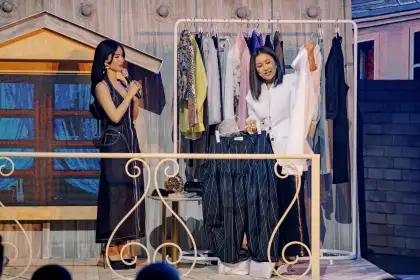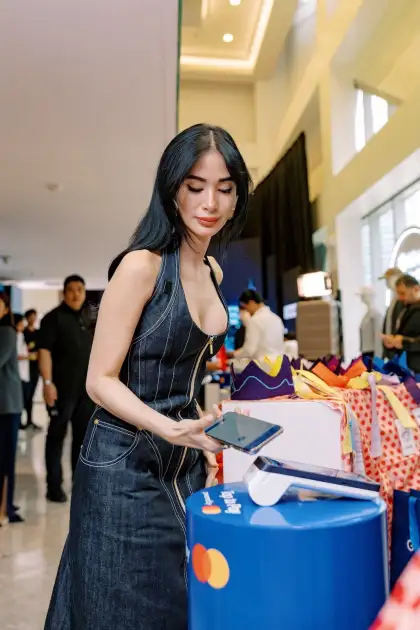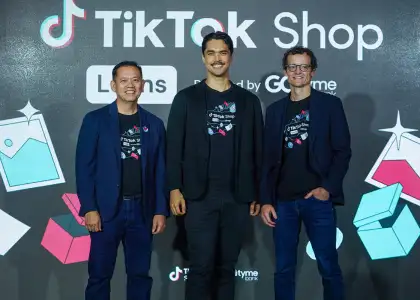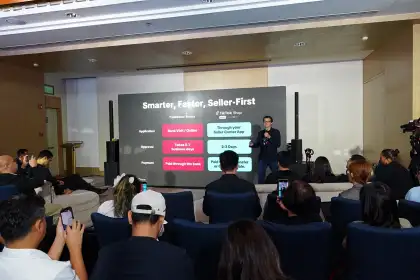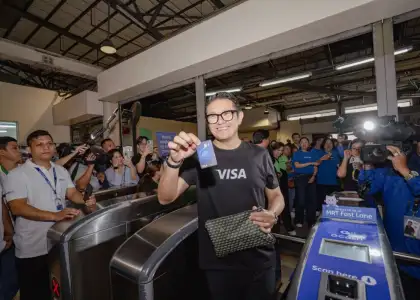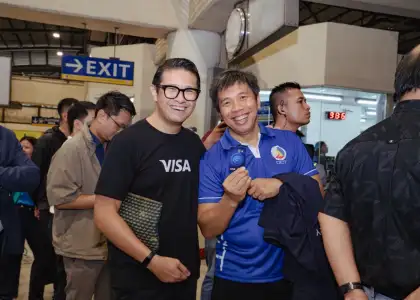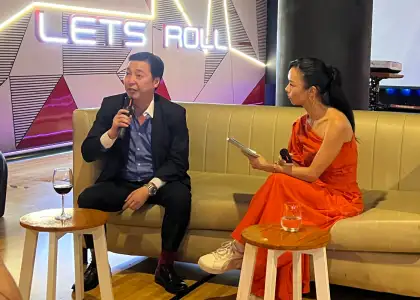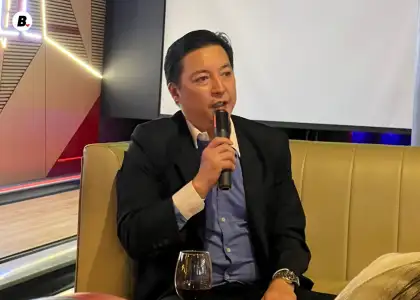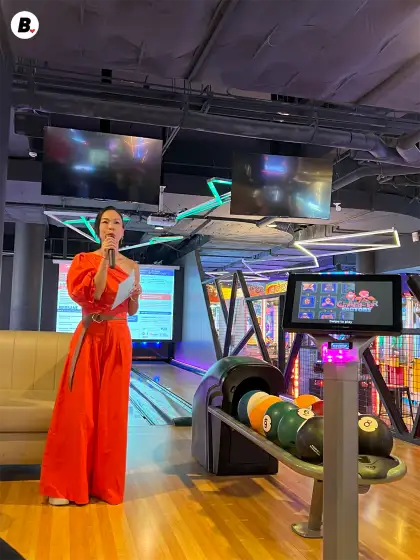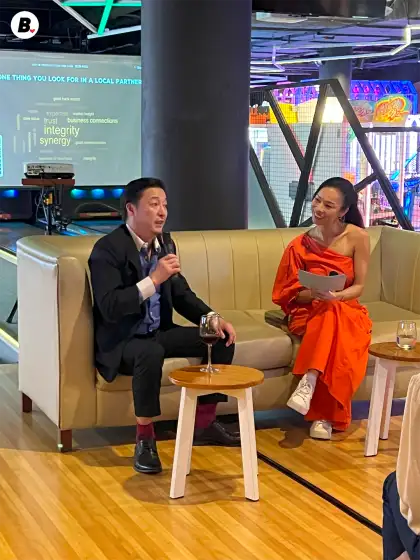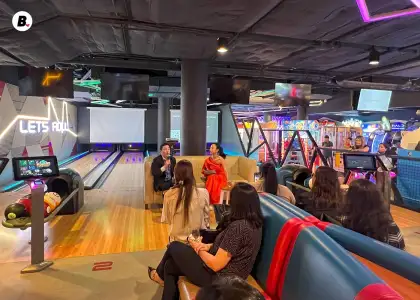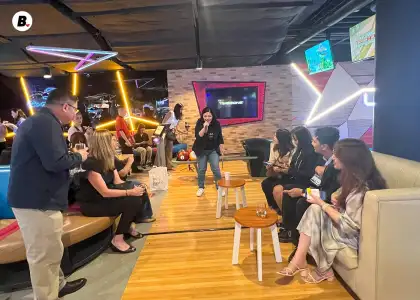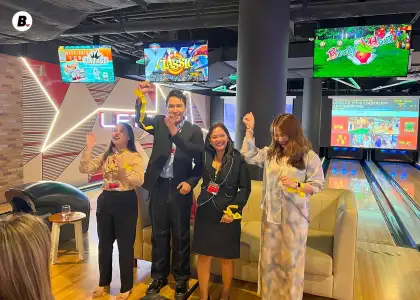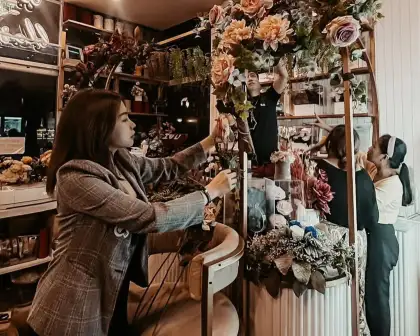Elevator Pitch: Al Cardenas, the Visionary CEO of Fintech Startup Safe App

Have you ever fallen victim to an online scam? Perhaps you eagerly purchased a product only to never receive it or received an entirely different item altogether. If you've experienced this, know that you're not alone. Alfrederick “Al” Cardenas, CEO and co-founder of the fintech startup Safe, went through a similar ordeal. However, he used this unfortunate experience as a catalyst to develop a solution for combating shopping scams in the Philippines and Southeast Asia.
The Beat Asia caught up with Al as he talked about how the Safe app is designed to protect online shoppers from scam transactions and fraudulent buyers and sellers.
Safe marks Al Cardena’s foray into the world of tech startups and his second venture in the fintech sector. The inception of Safe began following the successful sale of his initial fintech startup, Jungle, which significantly improved his financial situation and enabled him to buy a house for his family.
After purchasing their new home, Al and his wife decided to invest in a promising dining set they came across on Facebook Marketplace. The sellers appeared trustworthy, providing numerous photos, arranging same-day delivery through a logistics service, sharing a tracking link, and even sending a video of the dining set being loaded onto a truck.
They agreed to a 50% down payment, with the remainder to be paid upon delivery. Hours passed, but nothing arrived. It turned out that the booking had been canceled, as the seller used a generic pickup point, making it impossible to track them down. It was perfectly executed, and it was their first bitter taste of being scammed.
Initially, Al didn't rush to address this issue, as he was still enjoying his time as an Ivory Music artist/rapper, sharing stages with Ben&Ben and Brownman Revival. However, as days went by, the thought of solving this problem for millions of Filipinos began to haunt him. Eventually, he made the difficult decision to cancel his recording contract and embark on his next startup journey. Thus, the Safe app was born.

How has your initial vision of Safe evolved over time?
Originally, the idea was to provide a simple escrow-as-a-payment service. But our first investors, Founders Launchpad, challenged my concept, which is a common occurrence in the startup world. This pushed me to realize that an escrow service alone wouldn't be enough to tackle product-switching scams and ensure the safety of Filipino consumers' hard-earned money.
I connected with Armielyn Obinguar on Facebook, and I shared my vision for "Safekeeper." It's an additional layer of security that uses computer vision and machine learning to identify unique product and packaging attributes from what the seller sends and compare them to what the buyer receives.
Through artificial intelligence, we can detect and prevent product-switching scams before scammers can victimize consumers successfully. "Safekeeper" also helps us streamline our dispute management process, reducing our reliance on human intervention. After she heard the Safekeeper vision and recounted her experience of being scammed when she tried buying books online, she made a tough decision to leave everything behind and join me in building Safe as my co-founder and Chief Technology Officer. From a simple escrow service for eCommerce, Safe quickly transformed into an AI and fintech startup almost overnight.
Fintech is a rapidly evolving industry. How do you stay ahead of the curve and ensure your company remains innovative and competitive?
If you're running a tech startup and aiming to create a truly groundbreaking product, it's crucial to draw inspiration from various aspects of business and everyday life. You should take into account the insights of industry experts while also staying attuned to the trends you observe directly in the field. Simply adhering blindly to expert advice and following existing trends won't lead to groundbreaking innovations.
If Airbnb had relied solely on industry experts when they were just starting out, I doubt we'd have Airbnb today. An illustrative example of this approach comes from my co-founder and Safe's Chief Brand Officer, Isabelle Daza. She proposed an intriguing idea: If tech startups hire hackers to assess a company's or computer system's security, why not have Safe engage a real-world scammer and reward them if they successfully scam a real-world consumer within Safe's platform? Upon reflection, it makes perfect sense, and that's precisely what we're implementing today.
These innovative approaches are essential to staying ahead of the competition and ensuring that Safe continues to foster and prioritize a culture of innovation.

Can you explain the key features and strategies that Safe employs to protect Filipino online shoppers from scams and fraudulent activities?
There are three primary features provided by Safe to enhance security for buyers, sellers, and couriers in the context of Philippine social commerce:
1. The initial feature is Safe's escrow-as-a-payment service. When making a purchase on platforms such as Facebook, Instagram, Carousell, or in person, Safe's mobile app securely holds the payment on behalf of the buyer. Sellers are then informed that the payment is secure, allowing them to proceed with shipping or meeting the buyer.
Unlike cash-on-delivery (COD) where payment is required before inspecting the order, Safe grants buyers the freedom to open and evaluate their packages. If satisfied, they can finalize the transaction, prompting Safe to release the payment to the seller. In the event of dissatisfaction, buyers can initiate a dispute, with the potential to receive a refund upon winning the dispute.
2. The second protective feature is Safe's AI-driven product and package analysis tool, known as "Safekeeper." Utilizing computer vision and machine learning, Safekeeper identifies distinctive attributes of the product and packaging to be sent by the seller, subsequently comparing it to what the buyer actually receives.
This advanced technology aids in detecting product-switching scams, ensuring the security of both buyers and sellers. By thoroughly documenting product and packaging details, Safekeeper minimizes the possibility of product substitution by sellers or couriers.
3. Lastly, Safe offers the "Safe Seal" service, a specially designed package seal that is designed to break like an eggshell when tampered with. This seal includes unique serial and QR codes that are specifically assigned to each transaction. Serving as the ultimate safeguard, the Safe Seal acts as a barrier against sellers or couriers attempting to switch products during delivery.
How do you build and maintain trust with your customers in an era of data breaches and cybersecurity threats?
At Safe, we are in the process of establishing our internal cybersecurity team, and we have also initiated a collaborative partnership with a leading cybersecurity firm renowned for its work with the world's largest digital banks and fintech companies.
Our approach involves the integration of both in-house expertise and third-party cybersecurity specialists to maintain a vigilant stance in safeguarding the sensitive data of our users and partners.
In addition, we prioritize adherence to pertinent data protection regulations in the Philippines. Our commitment to staying proactive is reflected in our routine security audits and testing procedures, which are designed to prevent any complacency in our cybersecurity efforts.
Collaboration is essential in fintech. How do you choose your strategic partners and foster productive partnerships in such a competitive landscape?
Partnerships and collaborations should be deeply ingrained in the core of your business. Many founders often have a limited perspective of partnerships, viewing them as a simple union of two companies with a shared goal. However, it encompasses more than that. My approach to building and managing my companies begins with the very essence of it all—the founding team.
This initial partnership is the most critical one to carefully cultivate; otherwise, no amount of external collaborations will yield success for you and your company.
I see my role as a CEO as that of a builder-orchestrator. That's my primary function. To make Safe thrive, I need to possess the right insights that enable me to make informed decisions. I recognize that AI is the future, and I understand the necessity of establishing Safe as a trustworthy brand when it comes to handling people's finances.

Given these insights, you might think the logical step would be to immediately seek out AI and branding experts, bring them onboard, and call it a day. However, it's not that simple. Understanding human nature is crucial. Everyone has their own aspirations and goals, and you must take these into consideration. You need to prioritize the desires and needs of others as much as your own.
As a CEO, my responsibility extends beyond just finding the right skillset for my founding team. I must also ensure that their personal aspirations, personalities, and work ethics align with the culture we aim to instill at Safe. Failure to do so could lead to the demise of both our founding team and our company.
Once your founding team is in place, the next vital partnership to focus on is with your investors. They are among the first individuals to place their trust in you and your co-founders. They play a pivotal role, offering more than just capital for your startup.
As a startup founder, you may be tempted to accept any available funding, especially given the current state of startup investments. However, this would be a grave mistake. As a startup CEO, it's imperative to ensure that the investors you bring onboard contribute more than just financial resources. We seek their past experiences, unique industry insights, extensive networks, and track record with previous investments.
This doesn't mean we exclusively seek fintech investors just because we are a fintech startup. Quite the opposite. At Safe, we understand the value of connecting different dots from various industries and backgrounds to foster innovation. Therefore, we seek investors with expertise in eCommerce, social media, payments, banking, logistics, and other fields closely related to our goals and aspirations.
Our employees are also considered partners. I apply the same criteria to [selecting] my founding team as I do to early and key employees because they too play a pivotal role in building Safe into a successful company. Finding relevant skills is relatively straightforward, but the real challenge lies in finding individuals with the right mindset, work ethic, and integrity who truly fit the culture we are cultivating at Safe.
To me, when contemplating partnerships and collaborations, it all begins within. Establishing a startup and making it competitive primarily involves internal partnerships and collaborations. Working with external companies comes later, but the foundation must be solid within your organization.
Can you discuss any technological innovations or tools that Safe has developed or implemented to enhance online safety for all stakeholders?
At Safe, we foster a culture of innovation that extends beyond just following the latest trends and exclusively focusing on digital advancements that are on the horizon.
We also have a retrospective approach where we consider how technologies from the past can effectively address the current and growing issue of online scams in the Philippines. A prime illustration of this is our utilization of Safekeeper and Safe Seal technology.
Safekeeper represents our AI-driven tool for analyzing products and packages, employing computer vision and machine learning to identify distinctive features on the seller's product and packaging compared to what the buyer receives. This aids us in detecting product-switching scams and streamlines our dispute resolution process. Nevertheless, we acknowledge that this alone may not deter sellers and couriers from attempting to switch products before they reach consumers. That's why we conducted a historical analysis and drew inspiration from some of the most reliable analog solutions in logistics.
We took cues from the eggshell sticker labels found on SIM card packaging in the country and integrated these ideas into our existing groundbreaking solutions, dubbing it Safe Seal.
Safe Seal is crafted from a special eggshell-like material that breaks upon tampering. It incorporates unique serial and QR codes, along with other distinct identifiers that are exclusively linked to a Safe transaction. This discourages the duplication of Safe Seals and completely eliminates the risk of product-switching scams.
By amalgamating technologies from both the past and present, Safe is empowered to establish a secure eCommerce ecosystem, enhancing the online shopping experience for consumers and optimizing the efficiency of online selling for vendors.
Regarding fundraising efforts, could you outline the specific areas or initiatives where the funds will be allocated to help Safe grow and enhance its protective measures?
The founding team had a clear agreement amongst ourselves: our primary goal is to enhance the value of the company, not necessarily its size. This approach offers numerous advantages.
Firstly, it allows us to exercise discipline when expanding our team. By maintaining a controlled team size, we can better prioritize essential products, features, and tasks crucial for delivering our core services. This approach promotes creative time and effort management, enhancing cohesion within the company. By deliberately keeping our team relatively small compared to our goals for each stage of the company's growth, we have the capacity to assemble a group of individuals who safeguard the company's culture.
Moreover, it enables us to maintain a high standard of skills among our hires, as we cannot afford to bring in just anyone who walks through our doors. In this context, the capital raised for Safe's Seed round will be primarily allocated to enhancing our core services and technologies while optimizing our costs to achieve profitability as swiftly as possible. This entails training Safekeeper not only to detect product-switching scams but also to assist in analyzing user identities and the documents they provide.
This eliminates the need for third-party services for electronic Know Your Customer (eKYC) processes. Additionally, it involves equipping Safekeeper not just with the ability to detect product-switching scams and identify fake identities but also to help authenticate products on a category-by-category basis.
This expansion of capabilities will enable us to offer extra services to our users, such as product authentication through a smartphone camera. Safe's CTO and co-founder, Armielyn Obinguar, and I are continuously exploring numerous possibilities for Safekeeper's evolution, which fuels our dedication to hard work. Furthermore, we are investing in strengthening our brand equity.
I deliberately chose the name "Safe" because it conveys a sense of security and peace of mind. Consequently, Safe's co-founder and Chief Brand Officer, Isabelle Daza, and I are collaborating closely to build a brand that resonates with our users and instills trust.
Lastly, we will be dedicating resources to our go-to-market strategies, which will facilitate our growth and expansion, allowing us to reach more merchants and online marketplace platforms interested in securing their digital transactions and establishing a brand with a strong emphasis on security.
What are some of Safe's long-term aims or aspirations for securing the Philippines' digital infrastructure, and how fundraising will play a role in achieving these objectives?
Safe's aim is to establish itself as the primary choice for consumers and businesses across both the local market and Southeast Asia within the next three to five years. Achieving this objective will require a strategic approach and the effective utilization of funding from seasoned investors in the field, recognizing that this transformation will not occur suddenly or without a well-thought-out plan.
Can you share an example of a challenging decision you've had to make as CEO and how you approached it to benefit both your customers and shareholders?
During my five-year tenure as a startup CEO, one of the most formidable choices I faced was related to my initial fintech venture, Jungle. After months of tireless effort, we successfully raised our Pre-Seed funding and obtained a lending license in the Philippines.
Our mobile app was primed for launch, with several partner merchants on board, and our excitement was palpable. However, our euphoria was short-lived. Just moments after announcing the availability of Jungle's buy now, pay later app for travel and gadget loans, the former Philippine President Rodrigo Duterte declared a stringent COVID-19 lockdown.
The country's borders were closed, unemployment surged, and the demand for leisure travel and gadget purchases plummeted. Understandably, my co-founder, investors, and I were deeply concerned. Despite the pressure, I possessed the ability to maintain composure and focus during these critical moments. I was determined to find a path to success for Jungle, its customers, and investors. While my co-founder contemplated shifting to a different market, I reasoned that the global nature of the pandemic made such a move impractical.
Our investors advised patience, but this would mean years of dormancy for Jungle. I asked myself a pivotal question: What do people require during these trying times? The answer was clear—essential supplies and medicine. I then pondered who still had jobs despite the lockdown—frontline workers and call center agents adapting to remote work.
With these insights, I made the bold decision to press on with Jungle's operations, redirecting our focus from travel and gadgets to the country's first "grocery and medicine now, pay later" service. Three years down the line, Jungle was acquired by one of the world's largest banks for a life-changing sum. As a CEO, you must carefully consider advice and feedback from various well-intentioned sources. However, ultimately, the responsibility lies with you to analyze these inputs and make your own decisions. When you have unwavering confidence in your insights, do not hesitate to forge ahead and execute with determination.
As a leader, what are the core values and principles that guide your decision-making and the company's culture, and how do they contribute to your fintech's success?
I have immense admiration for Steve Jobs, who served as a significant source of inspiration during my early years in business and life. It was his story that instilled in me the belief that I could create my own technology company, even without a formal education.
One particular quote from Steve Jobs, which deeply resonated with me as a tech startup founder, is: "It doesn't make sense to hire smart people and then tell them what to do. We hire smart people so they can tell us what to do." As a CEO, my primary role is to assemble a team of individuals who surpass me in intelligence and expertise. This is the key to fostering growth. However, a crucial aspect that many startup founders tend to overlook is the importance of providing these brilliant minds with the freedom to excel in their work and share their insights on critical aspects of the company.
Regrettably, I've observed that many startup founders simply issue directives to their talented hires, adopting a hierarchical approach. If this is the prevailing culture in your startup, it will ultimately limit your company's growth to your own knowledge, experiences, and insights, without room for collaboration or team synergy.
At Safe, I consistently emphasize to my team that, when making decisions, the best ideas and reasoning should always prevail, regardless of their source. It doesn't matter whether you belong to the marketing department; if your idea regarding a crucial technical decision is more sound than those from the technology team, it should take precedence. This principle fosters a sense of inclusion among our team members and encourages them to voice their ideas. After all, we're all in this together, so why stifle their contributions?
What advice would you offer to aspiring entrepreneurs looking to venture into the fintech startup industry?
If you're an aspiring tech startup founder, whether it's in fintech or another field, my top piece of advice is to adopt the resilience of a cockroach. Cockroaches are known for their tenacity and difficulty in being eradicated, so strive to emulate their persistence.
Reflecting on my own journey in the startup realm over the past five years, I've realized that my accomplishments have largely stemmed from my ability to endure and remain in the game. The key is to persevere long enough to gain insights that elude others. Your goal should be to outlast your competitors, as many startups falter due to self-inflicted wounds rather than external factors like chance or competition.
What I'm getting at is that your startup's demise won't typically result from someone else launching a similar product or service. Instead, it's more likely to occur due to your own actions. This could involve mismanaging your funding, making ill-advised decisions, overestimating your capabilities while underestimating your expenses, or failing to maintain cohesion among your co-founders. These are all examples of self-inflicted wounds that can spell the end for a startup.
So, embrace the cockroach mentality by becoming resilient and difficult to extinguish. Achieve this by steering clear of actions that could lead to your startup's self-inflicted demise.
Say goodbye to online scams and read more about Safe here or download the app via Google Play Store. Stay updated on its latest updates by following them on Facebook and Instagram.
Enjoyed this article? Check out our previous Elevator Pitch profiles here.
Get the latest curated content with The Beat Asia's newsletters. Sign up now for a weekly dose of the best stories, events, and deals delivered straight to your inbox. Don't miss out! Click here to subscribe.



